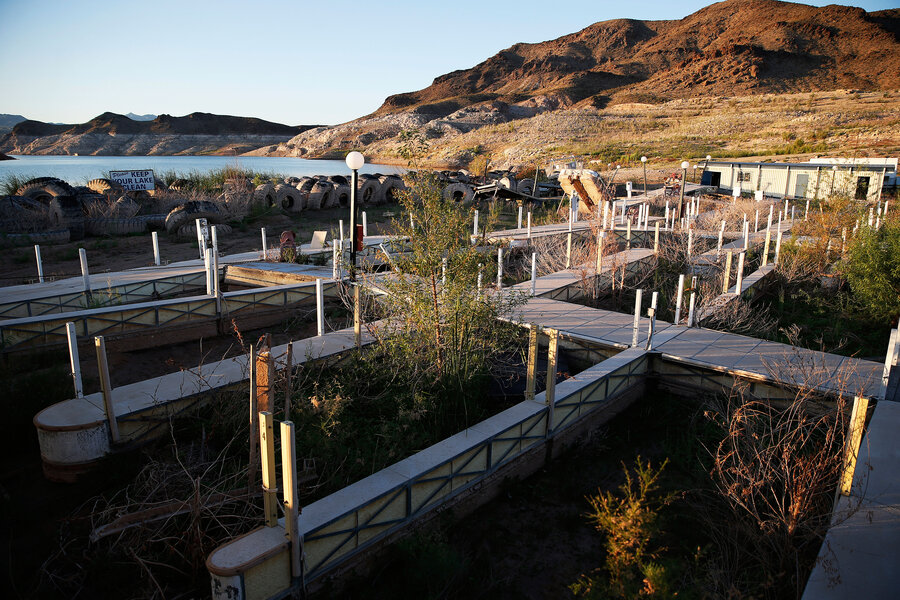Lake Mead drops to record low: What's next?
Loading...
Extended droughts has shrunk the country's largest reservoir to an all-time low, and leaders in the West's water planning say the area's water users must shift how they view their most valuable resource.
“California and the rest of the West are now at a point where they really can’t dismiss ideas that once would have been considered downright silly,” Rich Golb, former president of the Northern California Water Association, and now a Vancouver-based water consultant for PacificComm, LLC, told The Christian Science Monitor.
Lake Mead, hemmed in by the Hoover Dam, is the largest manmade reservoir in the United States and supplies water to California, Nevada, and Arizona, according to the Bureau of Reclamation. The drop from 1,220 feet above sea level – which is considered full – to 1,074 feet is a record low, and officials want the water level pushed well over 1,075 feet above sea level. If it remains below that elevation by the end of the year, Arizona, Nevada, and Mexico are forced by treaty to cut their water allocation – Arizona by 11 percent – although California is still guaranteed its full supply, The Monitor's Pete Spotts reported.
The first shift requires action from local, state, and tribal leaders in a region where the most bitter disputes have often involved water rights.
"The Study confirmed what most experts know: there are likely to be significant shortfalls between projected water supplies and demands in the Colorado River Basin in the coming decades," according to a March Congressional report from the Bureau of Reclamation. "All that rely on the Colorado are taking initial steps – working together – to identify positive solutions."
Even more paradigm-shifting solutions have come from other quarters. Canadian actor William Shatner, best known for playing Capt. Kirk in the original Star Trek TV series, said in April 2015 he wants to create a Kickstarter fund to build a water pipeline from rainy Seattle into Lake Mead. It would add a water-conscious aspect to the celebration of Star Trek's 50-year anniversary, and the Enterprise captain insisted adverse environmental impacts would be minimal.
"If it leaks, you're irrigating!" he told Yahoo's David Pogue.
The state of Washington, however, expressed less enthusiasm about the idea, and watershed scientists told The Monitor's Daniel Wood that using less water, or even desalinating seawater, would be more cost-effective. The value in Mr. Shatner's suggestion might be in raising awareness among the West's water users.
When the snowpack dropped to 30 percent in Nevada in the late 2000s, the Southern Nevada Water Authority first built a tunnel underneath Lake Mead to ensure their ability to retrieve water, no matter where the water level sunk, said Pat Mulroy, formerly manager of the water authority and now a fellow with the Brookings Institution. She said the area's water users must shift their thinking in water use.
"We identify ourselves as citizens of a state, and we identify ourselves as citizens of a nation. We never identify ourselves as citizens of a watershed," Ms. Mulroy said in a Brookings report. "If you want [water] treated and delivered to your house on demand 24/7, then you have an obligation to help defray [those costs]."
With this mindset, Nevada leaders implemented a second prong of a plan to reduce water use. Las Vegas and surrounding communities stopped planting grass in residential front yards, moved to a watering schedule, and began enforcing water waste measures. Even the Las Vegas Strip began to save water, finding ways to recapture, treat, and reuse water throughout its network of hotels and famous fountains and cutting its net water footprint to 7 percent of Southern Nevada's total use, the Desert Sun reported.








